Top Productivity Books and Courses Every Professional Should Explore in 2023
In today’s fast-paced world, productivity isn’t a luxury; it’s a necessity. Whether you’re a seasoned professional or someone just stepping into the workforce, mastering the art of doing more with less is crucial. But how do you sift through the noise and find proven strategies that actually yield results? Enter the treasure trove of productivity books and online courses.
From timeless classics to cutting-edge digital lectures, these resources provide a deep dive into the universe of productivity. They offer expert insights, strategies, and, often, a transformative outlook on how to approach your work and life. In this comprehensive pillar post, we’re laying down the ultimate guide for you—a curated list of “Top 20 Productivity Books and Courses Every Professional Should Explore in 2023.”
“Productivity is not just about doing more; it’s about creating more impact with less work.” – Tim Ferriss
Why should you care? Well, these books and courses are more than just a collection of tips. They are a roadmap to a more organized, focused, and fulfilling professional life. Plus, with the increasing shift to remote work and digital platforms, online courses offer a convenient and tailored learning experience, right at your fingertips.
So, if you’re looking to skyrocket your productivity, this is your one-stop-shop. Read on to discover a mix of handpicked books that have stood the test of time and online courses that are making waves in the productivity sphere.
What’s Inside:
- Top 10 must-read productivity books for 2023.
- Top 10 online courses that will level up your productivity game.
- A head-to-head comparison between books and courses to help you choose what’s best for you.
Buckle up and get ready to embark on a productivity journey like no other. Your future self will thank you!
Part 1: The Power of Reading for Productivity
Reading a book when you’re racing against deadlines might seem like a paradox. You’re probably wondering, “Isn’t the point of being productive to get more done, not less?” Ah, the irony! But hang tight—there’s method to the madness. Productivity books do more than just occupy your time; they transform how you manage it.
Why Read Productivity Books?
Insight into Expert Strategies
Have you ever wished you could pick the brain of a productivity expert? Through books, you get VIP access to industry leaders without the hefty consultation fees. They distill years of research into actionable advice. Imagine having Tim Ferriss or Cal Newport as your personal coaches. Priceless!
Exposure to Various Productivity Methodologies
You wouldn’t wear shoes that don’t fit, so why adopt a productivity system that’s not tailored to you? Books offer a wide array of techniques. Whether it’s the “Eat That Frog” method for tackling big tasks first, or “The One Thing” principle focusing on singular goals, there’s likely a methodology that fits your style.
Personal Anecdotes from Successful People
Ever wondered how Elon Musk manages multiple ventures or how Oprah Winfrey juggles her media empire? Many productivity books include case studies or anecdotes from successful people. These real-world examples offer practical solutions and are super relatable.
“The more that you read, the more things you will know. The more that you learn, the more places you’ll go.” – Dr. Seuss
Table: Benefits of Reading Productivity Books
| Benefit | Explanation |
|---|---|
| New Strategies | Fresh tactics for better workflow. |
| Inspiration | Real stories to kickstart your drive. |
| Self-Reflection | A mirror for self-assessment. |
| Versatility | Diverse approaches for diverse needs. |
So, why read? You gain insights, methodologies, and a dash of inspiration. It’s like a productivity buffet, and you’ve got the VIP pass. Books also offer a “slow-burn” advantage. Unlike quick-fix articles or short videos, they allow for deep dives. You get to marinate in ideas, play with strategies, and adopt what works.
Don’t underestimate the ripple effect of reading. The insights you gain can spill over into other areas of your life. It’s not just about being more efficient at work; it’s about enriching your overall life experience.
Make it a Habit
If you’re nodding your head thinking, “This is great, but when will I find the time?”, consider this. Making reading a habit can itself be a productivity hack. Start with just 10 minutes a day. You’d be surprised how many pages you can flip through in that short window.
Reading doesn’t have to be a solo venture either. Book clubs or accountability partnerships can make the process interactive and enriching. And hey, discussing productivity hacks can be a great icebreaker at social gatherings!
Quick Picks for the Busy Bee
If you’re stretched for time, consider summaries or audiobooks. While not a replacement for the real deal, they offer condensed wisdom for on-the-go learning.
To sum it up, productivity books are your secret weapon for game-changing strategies and insights. Whether you’re a pro at juggling tasks or just starting your productivity journey, books offer a wealth of knowledge. They’re the mentors you didn’t know you needed. So, why not pick one up today? Your future self will thank you.
Part 2: Top 10 Productivity Books for 2023
So, you’re pumped to up your productivity game. Fantastic! Now let’s steer you in the right direction. Here’s an expanded list of the top 10 productivity books that are absolute must-reads for 2023. Trust me, these aren’t your average self-help manuals. These are game-changers, backed by science, research, and real-world case studies.
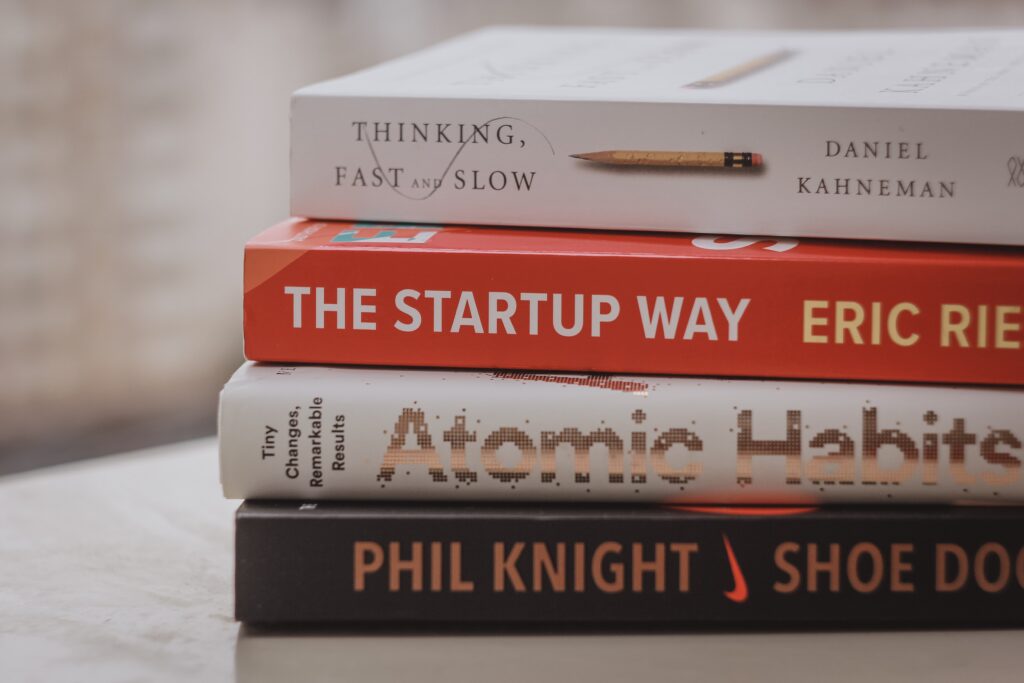
List and Overview
- “Getting Things Done” by David Allen
- Key Takeaways: Mastering the GTD methodology, the renowned two-minute rule, and the art of inbox zero.
- Where to Buy: Amazon
- Why It Made the List: This book is often considered the bible of productivity. It’s comprehensive, field-tested, and has evolved over years to stay relevant.
- Ideal For: Professionals juggling multiple tasks and looking for a proven system to organize it all.
- “Deep Work” by Cal Newport
- Key Takeaways: The irreplaceable value of focused, uninterrupted work, and the method to achieve it.
- Where to Buy: Bookshop
- Why It Made the List: Newport addresses the modern plague of distractions and provides a disciplined approach to achieve deep work.
- Ideal For: Those who struggle with distractions and want to excel in tasks requiring deep focus.
“Reading is to the mind, what exercise is to the body.” – Richard Steele
- “The 4-Hour Workweek” by Tim Ferriss
- Key Takeaways: Dismantling the 9-to-5 work culture, introducing mini-retirements, and automating tasks for freedom.
- Where to Buy: Barnes & Noble
- Why It Made the List: It disrupts traditional work-life norms and offers a radical perspective on what work can be.
- Ideal For: Adventurous souls looking for an alternative to the traditional work lifestyle.
- “Eat That Frog!” by Brian Tracy
- Key Takeaways: Why you should tackle your most challenging tasks first and how to apply the ABCDE method for setting priorities.
- Where to Buy: Audible
- Why It Made the List: It simplifies the concept of prioritization into actionable advice.
- Ideal For: Procrastinators and those struggling with prioritizing tasks.
- “Essentialism: The Disciplined Pursuit of Less” by Greg McKeown
- Key Takeaways: The courage of saying ‘no,’ cutting the unessential, and achieving more by doing less.
- Where to Buy: Amazon
- Why It Made the List: It challenges the ‘more is better’ philosophy and focuses on ‘less but better.’
- Ideal For: Those feeling overwhelmed by commitments and looking for a way to focus on what truly matters.
- “The One Thing” by Gary Keller and Jay Papasan
- Key Takeaways: The power of focusing on one significant task, the theory of the domino effect, and the art of setting aligned goals.
- Where to Buy: Book Depository
- Why It Made the List: It pares down productivity to its essence: focus.
- Ideal For: Those who feel their attention is fragmented and need a focal point.
- “Atomic Habits” by James Clear
- Key Takeaways: The science behind habit formation, the stacking method, and how to design your environment for success.
- Where to Buy: Books-A-Million
- Why It Made the List: Clear’s scientific approach breaks down the complexities of habit formation.
- Ideal For: Anyone looking to build or break habits effectively.
- “The Power of Habit” by Charles Duhigg
- Key Takeaways: Understanding the ‘habit loop,’ strategies for habit change, and the power of small wins.
- Where to Buy: IndieBound
- Why It Made the List: It dives into the neuroscience and psychology behind habits.
- Ideal For: Those interested in the science behind habits and looking for strategies to change them.
- “Make Time” by Jake Knapp and John Zeratsky
- Key Takeaways: How to become a “time dork,” setting daily highlights, and the “Laser” mode for focused work.
- Where to Buy: Amazon
- Why It Made the List: It’s a contemporary approach to productivity, highly relevant in our digital age.
- Ideal For: Digital natives who want practical tips to reclaim their time from tech distractions.
- “The Productivity Project” by Chris Bailey
- Key Takeaways: Leveraging your “biological prime time,” and understanding the triad of time, energy, and attention.
- Where to Buy: Bookshop
- Why It Made the List: Bailey’s experiments make productivity relatable and his findings are broad-based.
- Ideal For: Those who like an experimental approach to productivity and are open to trying various methods.
Table: Top 10 Productivity Books at a Glance
| Rank | Book Title | Author | Ideal For | Where to Buy |
|---|---|---|---|---|
| 1 | Getting Things Done | David Allen | Organizational Wizards | Amazon |
| 2 | Deep Work | Cal Newport | Focus Seekers | Bookshop |
| 3 | The 4-Hour Workweek | Tim Ferriss | Lifestyle Designers | Barnes & Noble |
| 4 | Eat That Frog! | Brian Tracy | Procrastinators | Audible |
| 5 | Essentialism | Greg McKeown | The Overwhelmed | Amazon |
| 6 | The One Thing | Gary Keller, Jay Papasan | Focus Seekers | Book Depository |
| 7 | Atomic Habits | James Clear | Habit Builders | Books-A-Million |
| 8 | The Power of Habit | Charles Duhigg | Psychology Enthusiasts | IndieBound |
| 9 | Make Time | Jake Knapp, John Zeratsky | Digital Natives | Amazon |
| 10 | The Productivity Project | Chris Bailey | Experimentalists | Bookshop |
No more aimless scrolling through endless lists. This curated selection is your roadmap to a more productive life. Whether you’re into hardcore productivity science or looking for simple hacks, there’s something here for everyone. Now, all that’s left is for you to choose which life-changing book to read first!
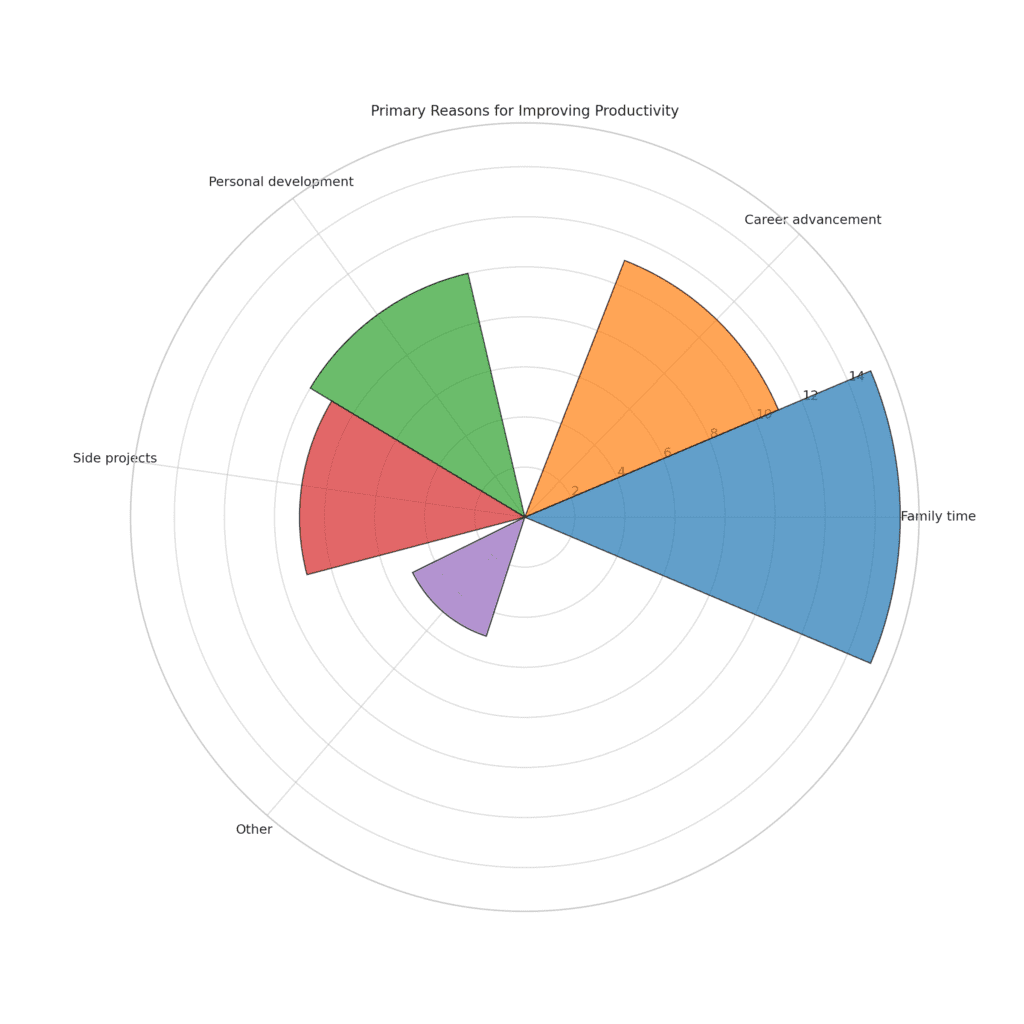
My Favorite Lessons from Top Productivity Books
Reading productivity books is more than just an intellectual exercise; it’s a transformative experience. They’re like treasure chests, each filled with golden nuggets of wisdom. Let me share some of my favorite lessons from a selection of these productivity powerhouses.
“Getting Things Done” by David Allen
Lesson: The Two-Minute Rule
This is a simple yet profoundly effective rule. If a task takes less than two minutes, do it immediately. The theory is, it takes longer to schedule and organize such tasks than to complete them. This rule has been a game-changer for me, eliminating minor tasks that would otherwise clog my to-do list.
“Deep Work” by Cal Newport
Lesson: Embrace Boredom
Cal Newport argues that the ability to focus is like a muscle; it needs to be trained. He recommends “embracing boredom” and not giving into distractions, especially during idle times. I’ve found this to be incredibly powerful. Training myself to be okay with boredom has helped me focus better during work periods.
“The 4-Hour Workweek” by Tim Ferriss
Lesson: Mini-Retirements
The idea that you don’t have to defer life until after retirement is liberating. Tim Ferriss introduces the concept of “mini-retirements”: taking extended breaks at various stages of life. This perspective has influenced how I plan my career and personal life, emphasizing experiences over deferred life plans.
“The books that help you the most are those which make you think the most.” – Carlos Ruiz Zafón
“Eat That Frog!” by Brian Tracy
Lesson: Tackle the Ugliest Frog First
Brian Tracy uses the metaphor of eating frogs to describe tasks. The “ugliest” frog is your biggest, most important task. By tackling it first, you achieve a significant win early in the day, setting a positive tone. I’ve applied this principle and noticed a boost in my productivity and morale.
Table: My Favorite Productivity Lessons
| Book Title | Lesson | Personal Impact |
|---|---|---|
| Getting Things Done | Two-Minute Rule | Streamlined to-do list |
| Deep Work | Embrace Boredom | Improved focus |
| The 4-Hour Workweek | Mini-Retirements | Balanced life planning |
| Eat That Frog! | Ugliest Frog First | Enhanced daily productivity |
“Essentialism” by Greg McKeown
Lesson: The Power of Saying No
In a world that glorifies “busy,” Greg McKeown’s lesson of focused selection is refreshing. The ability to say “no” to non-essential tasks gives you the time and energy for more meaningful work. I’ve learned to be selective, which has not only improved my work quality but also enriched my personal life.
“Atomic Habits” by James Clear
Lesson: Habit Stacking
James Clear teaches the concept of “habit stacking,” where you attach a new habit to an existing one. For instance, after I brush my teeth, I now write down three tasks for the day. This has helped me create sustainable habits that enhance my productivity.
These lessons have had a profound impact on how I approach my work and life. They’re not just tips; they’re strategies for a more fulfilled, productive existence. I’ve integrated them into my daily routine and witnessed their transformative power. I highly recommend diving into these books to uncover your own life-changing lessons.
Part 3: The Shift to Online Learning – The Rise of Online Courses
The landscape of learning is evolving, and online courses are leading the charge. Gone are the days when classrooms and chalkboards were the only avenues for education. Now, all it takes is a laptop and an internet connection. In fact, as Donna J. Abernathy put it, “Online learning is not the next big thing; it is the now big thing.”
Accessibility and Flexibility
One of the most appealing aspects of online courses is their accessibility. Whether you’re a night owl or an early bird, online courses cater to your schedule. There’s no need to commute, saving both time and energy. For busy professionals or parents, this flexibility is invaluable. I’ve personally experienced the convenience of being able to take a course on time management while managing a tight schedule. The irony isn’t lost on me, but the flexibility is a lifesaver.
Tailored Learning Experiences
With online courses, one size doesn’t fit all—and that’s a good thing. Online platforms offer a plethora of courses on myriad subjects. Whether you’re looking to enhance your Excel skills, delve into the philosophies of ancient Greece, or master the art of French cooking, there’s likely a course tailored to your interests. The customization is not just subject-based; many courses offer different levels of difficulty, letting you pick a course that matches your skill level.
Cost-Effectiveness
Traditionally, quality education has often come with a hefty price tag. Online courses disrupt this norm. Many platforms offer free courses, and even the paid ones are usually more affordable than their traditional counterparts. Also, let’s not forget the additional savings from not having to commute or buy textbooks. In essence, online courses democratize education, making it accessible to those who might not have hefty budgets but have a thirst for knowledge.
“The future of learning is digital. The days of physical classrooms are numbered.” – Anant Agarwal, CEO of edX
Table: Comparing Cost of Traditional vs Online Courses
| Parameter | Traditional Courses | Online Courses |
|---|---|---|
| Tuition Fees | High | Low or Free |
| Commuting Costs | Yes | No |
| Textbooks | Often Required | Usually Included |
| Time Investment | Fixed Schedule | Flexible |
List: Advantages of Online Courses
- Flexibility in Schedule: Learn whenever you want; no need to adjust your life around a course timetable.
- Variety of Topics: From coding to cooking, the world is your educational oyster.
- Self-Paced Learning: No pressure to keep up with a class; you set your learning tempo.
- Affordable Prices: Say goodbye to exorbitant tuition fees and hello to budget-friendly or even free courses.
- Global Community: Network with peers from around the world, enriching your learning experience.
The Quotable Expert: Donna J. Abernathy
Let’s circle back to Donna J. Abernathy’s quote: “Online learning is not the next big thing; it is the now big thing.” This sentence encapsulates the seismic shift in the educational landscape. Abernathy, a notable voice in the field of e-learning, underscores the urgency and relevance of online learning. It’s not a future possibility; it’s a present reality.
A Real-World Case Study: MasterClass
MasterClass is a stellar example of the power of online learning. Offering courses from experts in various fields—be it writing by Margaret Atwood or cooking by Gordon Ramsay—MasterClass has democratized access to world-class education. I took a MasterClass on negotiation techniques, and the depth of content and quality of instruction were unparalleled.
Concluding Thoughts
Online courses are more than just a convenient alternative to traditional education; they’re revolutionizing how we learn. They offer unprecedented accessibility, tailored learning experiences, and unparalleled cost-effectiveness. Whether you’re a professional looking to upskill or a lifelong learner like me, online courses offer a smorgasbord of opportunities to enrich your knowledge and skills. The question isn’t whether online courses are valuable; it’s which one will you enroll in first?
The Future of Online Learning: Where Are We Headed?
The trajectory of online learning is not merely upward—it’s skyrocketing. According to a report by Research and Markets, the global e-learning market is expected to reach $375 billion by 2026. This explosion is fueled by continuous technological advancements and an ever-increasing appetite for remote learning.
The Role of Technology
From AI-driven personalized learning paths to Virtual Reality (VR) classrooms, technology is playing a pivotal role in the evolution of online education. Companies like Coursera and Udacity are already leveraging machine learning algorithms to offer more personalized learning experiences. Imagine a future where your “virtual professor” knows exactly where you struggle and tailors the course content accordingly.
Lifelong Learning and Skill Development
The convenience and flexibility of online courses make them ideal for lifelong learning. Platforms like LinkedIn Learning and Skillshare offer courses that range from professional development to personal hobbies. The fact that you can jump from a course on Python programming to one on watercolor painting in the same platform speaks volumes about the versatility of online education.
“The capacity to learn is a gift; the ability to learn is a skill; the willingness to learn is a choice.” – Brian Herbert
The Gig Economy and Online Courses
The rise of the gig economy intersects perfectly with online learning. Freelancers and gig workers can easily upskill or reskill through online courses, keeping themselves marketable. Websites like Udemy offer a wide range of courses that cater specifically to freelancers, from digital marketing to graphic design.
Table: Online Platforms and Their Specializations
| Online Platform | Specialization | Notable Features |
|---|---|---|
| Coursera | Academic & Professional | University Partnerships |
| Udacity | Tech & Coding | Nanodegree Programs |
| LinkedIn Learning | Professional Development | Integration with LinkedIn Profile |
| Skillshare | Creative Skills | Community Interaction |
| Udemy | Varied | Huge Course Catalog |
In Summary
The impact of online learning is far-reaching, touching various facets of our lives—from academic and professional development to personal growth and skill enhancement. As we move forward, the lines between traditional and online education will continue to blur, making way for a more inclusive, personalized, and tech-driven educational landscape. The time to embrace online learning is not tomorrow; it’s today. With a plethora of platforms and courses at your fingertips, there’s never been a better time to dive into the world of online learning.
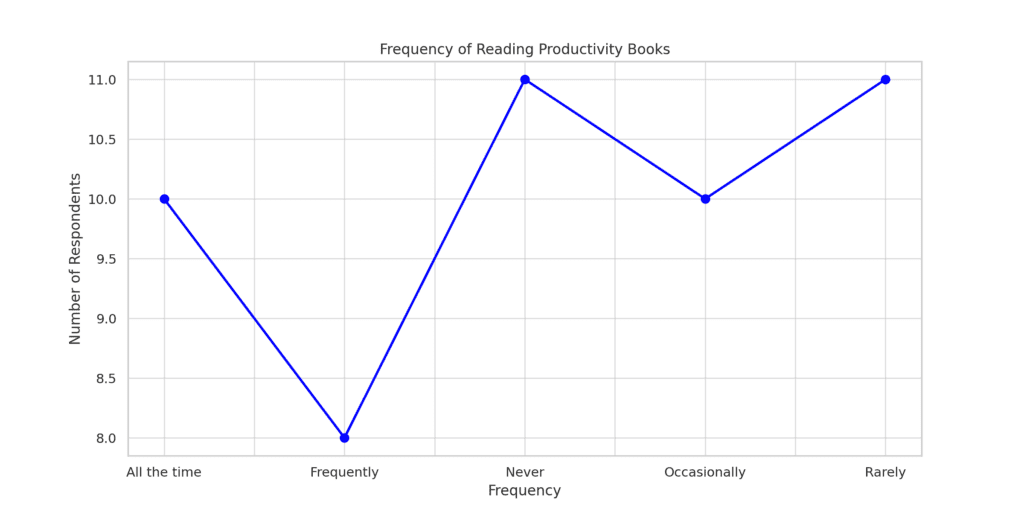
Part 4: The Transformative Power of Audiobooks – Why They Are the New Productivity Hack
Audiobooks are not just an alternative to reading; they’re a productivity hack that’s changing the game. In our busy, always-on world, finding time to sit down with a physical book can be a challenge. Audiobooks fill this gap beautifully, allowing you to consume valuable content while multitasking. As the saying goes, “Time is money,” and audiobooks ensure you’re making the most of both.
The Convenience Factor
The most obvious advantage of audiobooks is their convenience. You can listen to them while doing household chores, exercising, or even during your commute. It’s like having a personal narrator read to you, turning otherwise mundane tasks into opportunities for personal growth. I’ve found that listening to audiobooks while doing the dishes or jogging has made these activities more engaging and intellectually stimulating.
The Science Behind Audiobooks
A common misconception is that listening is a “lesser” form of learning compared to reading. However, research shows that auditory learning can be just as effective. According to a study by the University of California, Berkeley, our brain processes audiobooks and text in similar ways, activating the same cognitive functions.
Speed Listening: A Skill to Master
The functionality to adjust the playback speed in most audiobook platforms like Audible allows for what is called ‘speed listening.’ By increasing the speed, you can consume content faster without compromising comprehension. Seasoned audiobook listeners often use this feature to power through lengthy books, making it a true productivity hack.
“The book you don’t read won’t help.” – Jim Rohn
Table: Comparing Reading and Audiobooks
| Parameter | Reading | Audiobooks |
|---|---|---|
| Time Investment | Fixed | Flexible |
| Multitasking | Limited | Possible |
| Speed Control | Reader’s Pace | Adjustable |
| Cognitive Engagement | High | Comparable |
Audiobooks and Learning Styles
Not everyone is a visual learner; some people absorb information better when they hear it. Audiobooks cater to auditory learners, offering a medium that aligns with their natural learning style. Websites like Learning Ally even specialize in audiobooks for people with dyslexia, learning disabilities, or visual impairment, making learning accessible to all.
List: Advantages of Audiobooks
- Convenience: Listen anytime, anywhere.
- Multitasking: Turn mundane tasks into learning opportunities.
- Speed Control: Consume content at your preferred pace.
- Accessibility: Ideal for auditory learners and those with learning disabilities.
- Portability: No need to lug around heavy books.
- Wide Range of Titles: From bestsellers to obscure gems, the audiobook world is vast.
The Rise of Podcasts and Audiobooks
The popularity of podcasts has helped fuel the growth of audiobooks. Podcast platforms like Spotify are now offering audiobooks as part of their catalog, bridging the gap between different audio-based media. This trend signifies the merging of various audio formats into a unified medium of information and entertainment.
A Real-World Case Study: Blinkist
Blinkist is an app that offers condensed versions of non-fiction books, both in text and audio formats. For those who are extremely time-crunched, Blinkist provides the essence of a book in just 15-20 minutes. I’ve used Blinkist to ‘preview’ books before deciding whether to invest in the full version, saving both time and money.
Concluding Thoughts
Audiobooks are not merely a substitute for reading; they are a modern solution to the age-old desire for continuous learning and personal development. Whether you’re looking to maximize your time, cater to your learning style, or simply explore a new medium, audiobooks offer a versatile and effective way to consume content. So, the next time you find yourself short on time but high on curiosity, consider diving into the world of audiobooks. It’s a productivity hack worth exploring.
The Emotional Impact of Audiobooks
One facet of audiobooks often overlooked is the emotional depth they can offer. Narrators bring a unique dimension to the content, adding tone, emotion, and emphasis where needed. This can make non-fiction material more engaging and can turn fiction into a riveting experience. I’ve often found that the emotional nuance added by a skilled narrator can make complex subjects more accessible and relatable.
The Social Aspect: Audiobook Clubs
Yes, you read that right—audiobook clubs are a thing, and they’re growing in popularity. Platforms like Goodreads have dedicated sections for audiobook discussions. This brings a social dimension to what is generally considered a solitary activity. It allows for the exchange of ideas and interpretations, enriching the overall experience. Just like traditional book clubs, audiobook clubs offer a communal way to engage with content and share perspectives.
Sustainability and Audiobooks
In an age where sustainability is a growing concern, audiobooks offer an eco-friendly alternative to printed books. They require no physical materials, and their digital nature means they can be stored and distributed without the carbon footprint associated with paper production and shipping. Websites like Eco-Libris even focus on promoting digital reading materials as a more sustainable option.
Table: Additional Benefits of Audiobooks
| Benefit | Explanation |
|---|---|
| Emotional Depth | Narrators add an emotional layer to the content. |
| Social Engagement | Audiobook clubs offer a community experience. |
| Sustainability | Eco-friendly alternative to printed books. |
Final Words
Audiobooks are not just for the busy professional looking to squeeze in some extra learning during their commute. They are for anyone and everyone who values personal development, social engagement, and even sustainability. With the ever-increasing variety of titles, platforms, and social engagement opportunities, there’s never been a better time to explore the world of audiobooks. So go ahead, give your eyes a break, let your ears do the learning, and unlock a whole new level of productivity and personal growth.
Part 5: The Intersection of Mindfulness and Productivity – Courses to Explore
In the hustle and bustle of modern life, mindfulness might seem like an alien concept. However, as counterintuitive as it might sound, slowing down can actually make you more productive. Mindfulness is not just about meditation or deep breathing; it’s a holistic approach to life that can significantly improve your focus, decision-making, and ultimately, productivity.
Why Mindfulness Matters in Productivity
Mindfulness is the practice of being fully present and engaged in the moment. In a world of constant distractions, it’s easy to spread ourselves too thin. This is where mindfulness comes in. It teaches you to pay full attention to one task at a time, improving the quality of your work. Numerous studies, like those published in the Harvard Business Review, show a strong correlation between mindfulness and increased productivity.
The Concept of ‘Mindful Productivity’
‘Mindful Productivity’ is the integration of mindfulness techniques into your daily workflow. It’s not just about doing more; it’s about doing more meaningful work. By bringing focus and intentionality into your tasks, you can achieve better results with less stress. For example, I’ve incorporated ‘mindful breaks’ into my workday, where I step away from all devices and spend a few minutes in quiet reflection. This simple practice has dramatically improved my focus and efficiency.
“The best way to capture moments is to pay attention. This is how we cultivate mindfulness.” – Jon Kabat-Zinn
Table: Mindfulness Techniques for Productivity
| Technique | What It Involves | Productivity Benefit |
|---|---|---|
| Mindful Breathing | Focusing on your breath | Reduces stress, increases focus |
| Time Blocking | Allocating specific time slots for tasks | Improves time management |
| Digital Detox | Scheduled time away from digital devices | Reduces distraction, improves mental well-being |
List: Best Mindfulness Courses for Productivity
- “Becoming More Productive” by The Great Courses
- Covers the psychology behind productivity and introduces mindfulness techniques.
- Available on The Great Courses
- “Mindfulness and Productivity: Boost Your Focus and Creativity” on Udemy
- Ideal for those looking to combine mindfulness with creative pursuits.
- Available on Udemy
- “Mindful Productivity: Do More With Less Stress” on Coursera
- Focuses on reducing stress while increasing output.
- Available on Coursera
- “The Science of Well-Being” by Yale University on Coursera
- Offers a scientific approach to happiness and productivity.
- Available on Coursera
- “The Mindful Tech Coach” on Teachable
- Specifically aimed at professionals in tech but applicable to all.
- Available on Teachable
Real-World Case Study: Google’s ‘Search Inside Yourself’
One of the most compelling examples of mindfulness in the corporate world is Google’s ‘Search Inside Yourself’ program. Developed by Google engineer Chade-Meng Tan, this program has been incredibly popular among Google employees. It focuses on mindfulness and emotional intelligence to boost productivity and well-being. The program has been so successful that it has spun off into its own organization, Search Inside Yourself Leadership Institute.
Concluding Thoughts
Mindfulness may have its roots in ancient practices, but its application in the modern workplace is more relevant than ever. By embracing mindfulness, you’re not just improving your mental well-being; you’re setting the stage for a more focused, efficient, and productive life. Whether it’s through practicing mindful breathing, taking a course, or incorporating it into your corporate culture, the intersection of mindfulness and productivity is a space ripe with potential. So go ahead, take that mindful step today; your future productive self will thank you.
Part 6: Final Recommendations and Next Steps – Your Productivity Blueprint for 2023
You’ve journeyed through the labyrinth of productivity books, embraced the flexibility of online courses, tapped into the convenience of audiobooks, and even dabbled in mindfulness. Now what? It’s time to piece it all together into a cohesive productivity blueprint for 2023.
The Synergy of Multiple Resources
The real magic happens when you blend different resources. Reading a book can give you a solid theoretical foundation, but an online course can offer the practical skills to implement that theory. Similarly, audiobooks are perfect for reinforcing what you’ve learned, and mindfulness practices can keep you focused throughout the process.
“Productivity is never an accident. It is always the result of a commitment to excellence, intelligent planning, and focused effort.” – Paul J. Meyer
Customizing Your Productivity Plan
No two people are the same, which means your productivity plan should be as unique as you are. Here are some steps to create a customized blueprint:
- Identify Areas for Improvement: Is it time management, focus, or perhaps work-life balance?
- Choose Relevant Books: Pick books that address your specific needs.
- Select Supplementary Courses: Find online courses that offer practical solutions.
- Incorporate Audiobooks: For reinforcement and multitasking.
- Integrate Mindfulness: To maintain focus and mental well-being.
Table: Customizing Your Productivity Blueprint
| Step | Resource Type | Example |
|---|---|---|
| 1 | Self-assessment | SWOT Analysis |
| 2 | Books | “Getting Things Done” for time management |
| 3 | Online Courses | “Master Your Focus” on Udemy |
| 4 | Audiobooks | “The 7 Habits of Highly Effective People” on Audible |
| 5 | Mindfulness | Daily meditation practice |
List: Recommended Tools to Track Progress
- Todoist: For task management and to-do lists. Available on Todoist.
- Toggl: Time tracking made simple. Available on Toggl.
- Headspace: For guided mindfulness exercises. Available on Headspace.
- Goodreads: To track your reading progress and join audiobook clubs. Available on Goodreads.
- Coursera/Edx: To enroll in and track online courses. Available on Coursera and Edx.
Real-World Case Study: The Productivity Transformation of a Busy Parent
Let’s take the example of Sarah, a busy parent juggling a full-time job and family responsibilities. She identified time management as her primary challenge. Sarah read “Eat That Frog!” for theoretical knowledge, took an online course on time-blocking, listened to “Deep Work” as an audiobook during her commute, and started practicing 10 minutes of mindfulness every morning. Within a few months, Sarah reported a 30% increase in her productivity and a significant reduction in stress.
Concluding Thoughts: The Journey Ahead
The road to productivity is not a sprint; it’s a marathon. The resources and strategies discussed in this guide are your training regimen. It’s up to you to put in the effort, track your progress, and continually adapt your methods.
As we step into 2023, armed with books, courses, audiobooks, and mindfulness techniques, the possibilities are endless. Take what you’ve learned, apply it diligently, and watch as your productivity soars to new heights. After all, a more productive you is not just an aspiration; it’s a future reality waiting to happen.
Conclusion: Your Roadmap to a More Productive 2023
As we wrap up this comprehensive guide, let’s revisit the core message: productivity is not an elusive unicorn; it’s a skill that can be honed and mastered. Whether you’re a seasoned professional or a newcomer to the workforce, there’s always room for improvement. And what better way to enhance your productivity than through the wealth of knowledge available in books and courses?
“Productivity is never an accident. It is always the result of a commitment to excellence, intelligent planning, and focused effort.” – Paul J. Meyer
We’ve explored a gamut of resources—from enlightening books that offer expert strategies and personal anecdotes to online courses that provide tailored, practical experiences. The top 10 books and courses listed are not just recommendations; they’re invitations to elevate your productivity game. From classics like “Getting Things Done” by David Allen to courses that usher you into the realm of ‘Mindful Productivity’, the options are diverse and abundant.
Recap: Top Recommendations for a Productive 2023
- “Getting Things Done” by David Allen
- “Deep Work” by Cal Newport
- “The 4-Hour Workweek” by Tim Ferriss
- Time Management Fundamentals (Course)
- Mastering Focus and Concentration (Course)
- Essentialism: The Disciplined Pursuit of Less (Course)
- 5 Must-Read Books on Time Management
- Online Courses to Master the Art of Focus and Concentration
- Why Audiobooks are the New Productivity Hack
- The Role of Mindfulness in Productivity: Best Courses to Explore
Your productivity journey doesn’t have to be a solo endeavor. Engage in discussions, take notes, and apply what you’ve learned consistently. Remember, the best form of learning is doing.
If you are interested in reading a recent article I authored on setting up the perfect home office for productivity you can find that here. Another on the theme of productivity software can be found here.
So, what are you waiting for? Dive into that book you’ve been eyeing, enroll in that course you’ve bookmarked, and most importantly, start applying these productivity principles to your daily life. The road to a more productive you is paved with informed choices, and this guide is your roadmap.
If this guide served as a valuable resource in your productivity quest, consider subscribing to our newsletter for more insights and tips. Found it useful? Don’t forget to share it with your network. Here’s to a more productive 2023! 🚀
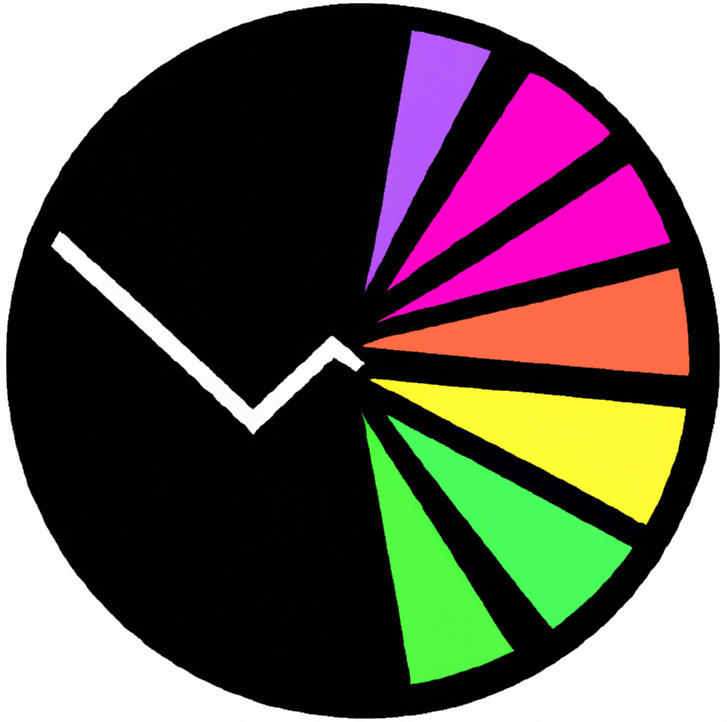
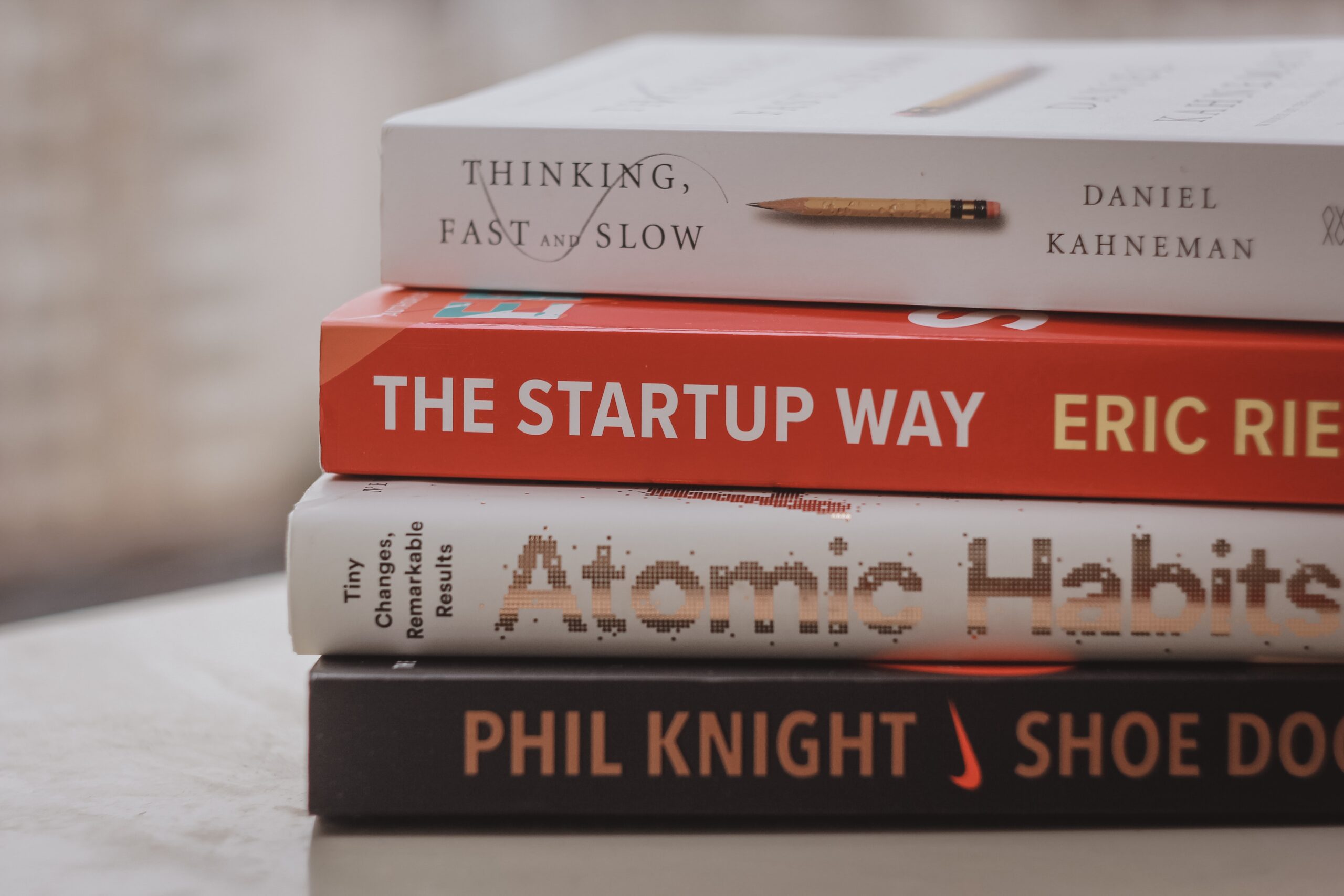
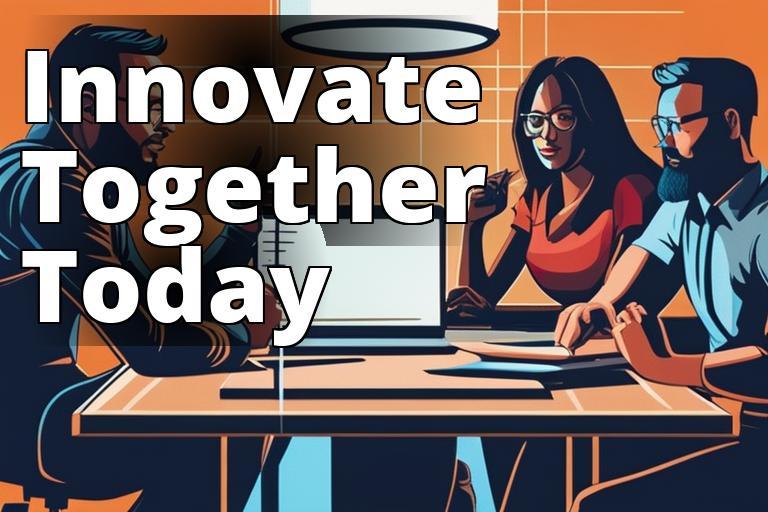

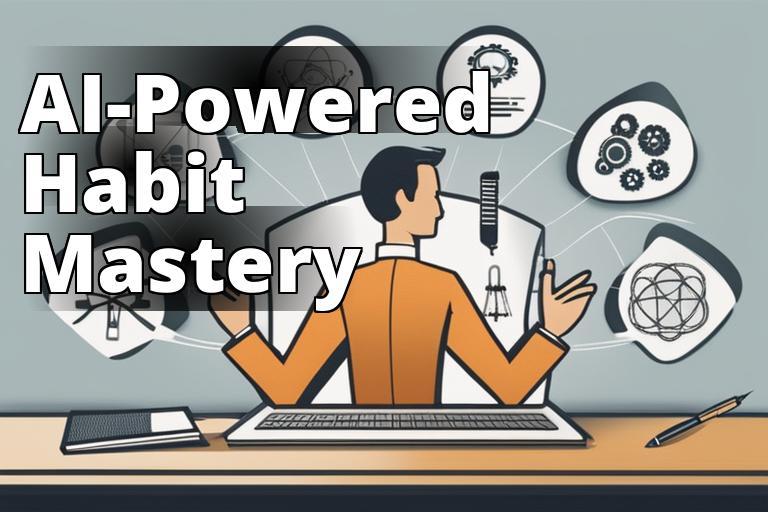
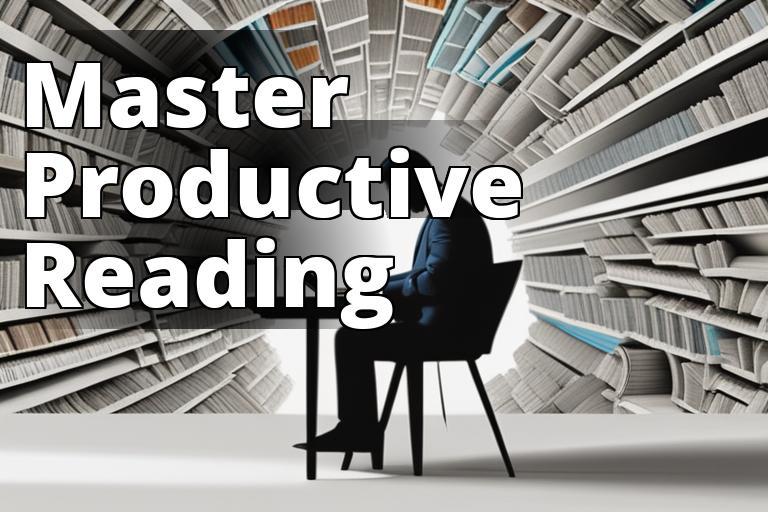
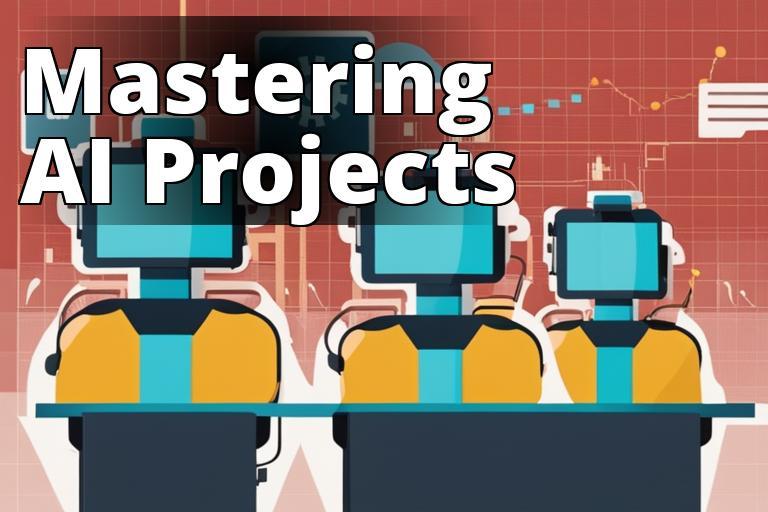
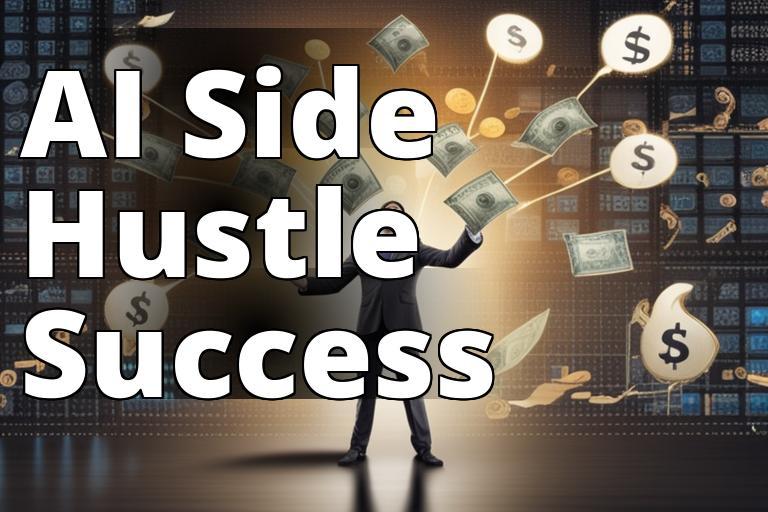
One Comment